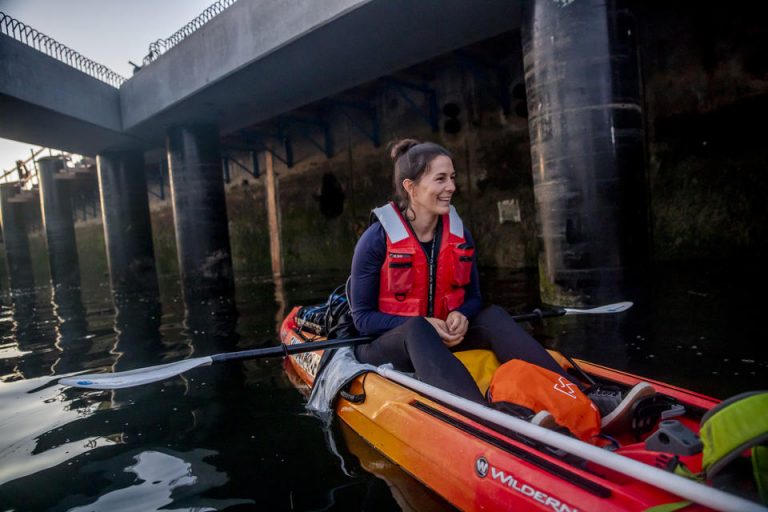Published on July 8, 2019

Salmon researcher Kerry Accola is standing on the docks at Seattle’s Bell Harbor Marina on the edge of Elliott Bay.
“There’s salmon right there. You can see them,” she says, gesturing toward a nearshore abyss. The setting sun reflects off the water’s surface, making it difficult to see anything more than bits of trash.
But Accola sees salmon. The Washington Sea Grant fellow knows what to look for after spending four months snorkeling this waterway with the University of Washington’s Seawall Project research group, in its effort to enhance and monitor salmon habitat along the newly renovated Elliott Bay Seawall.
Her colleagues are still snorkeling, but in recent months, Accola has been kayaking along the same section. At least once a week, about six hours at a time, at all times of day — sometimes with an intern, often alone — she paddles and collects data on how many salmon use the seawall corridor and the behavior they exhibit when they do. The way she’s doing this — with a hydroacoustic sonar camera mounted on the bottom of the kayak — is novel, and giving her access into a world few get to experience: the cultures of salmon, and Seattle’s harbor, at night.
“We know virtually nothing about [salmons’] nighttime behavior along the seawall,” says Jeff Cordell, a principal research scientist with the Wetland Ecosystem Team and School of Aquatic and Fisheries Sciences at UW.
Salmon depend on light for both navigation and feeding: Not understanding how these activities play out along the waterfront is a huge hole in our knowledge of how built environments impact the animals that lived there first.
Continue reading at Crosscut.
Originally written by Hannah Weinberger for Crosscut.